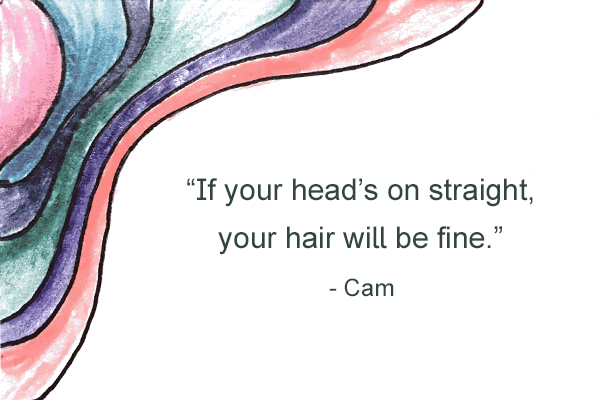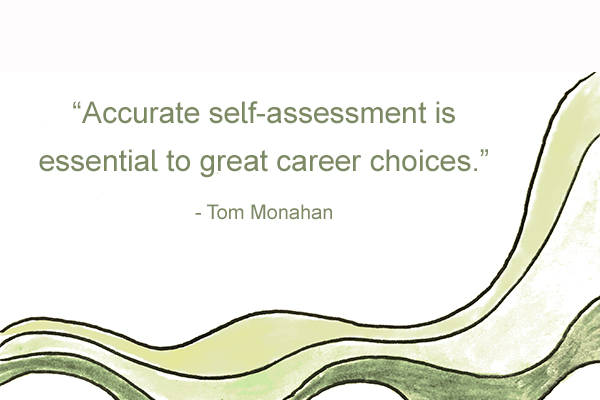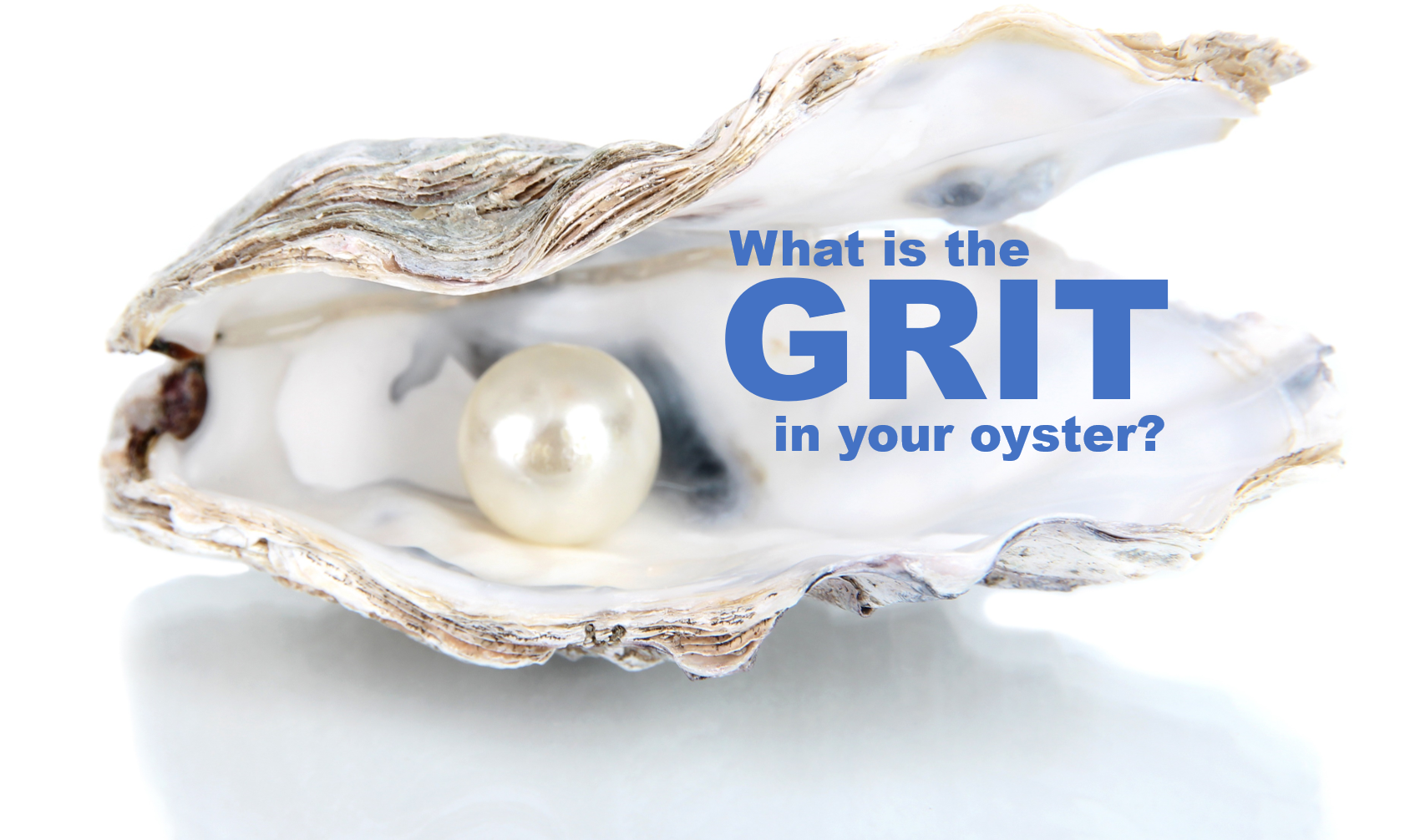To solve the problem, you must first define it. And your first question probably isn’t the right one to ask.
Viewing entries in
#lifehack
I recently heard Beau Lotto, the neuroscientist whose TED talk on illusions has generated over 5 million views, speak at a conference* during which he said:
“courage is more important than confidence”
As I have been reflecting on this in my own life and work, including the current search for my next career step, I think he is right. If you are given the choice to be confident or courageous, you should always choose courage.
Confidence is believing you can. Courage is knowing that you might fail, but doing it anyway.
Confidence’s posture is upright, which makes it fragile. Confidence can’t fail. Courage leans into the wind, gets up when it falls down, and is more resilient.
Confidence is proud and can push others away. Courage is vulnerable and draws others in.
Confidence can be external facing, seeking the approval of others. Some acts of courage are public and heroic, but many are private and quiet. Doing the right thing, even when it is hard and no one is looking.
Confidence is complete and closed off to learning new things. Courage requires it.
Confidence requires prior relevant experience (otherwise it starts slipping into the danger zone of “over confidence”). Courage can forge it’s own path.
Confidence is a feeling. Courage is a decision to act.
In your own life, in your family, in your business, and in our communities, how can we put our personal and societal pressure for confidence aside, and instead cultivate more courage?
*The conference was TIDE (Technology, Innovation, Design, and Experience) produced by Avixa in conjunction with the InfoComm show. Amazing event. You should go!
This article was originally published on LinkedIn Pulse.
“Love makes you brave.” – Rich Kannwischer
“Why do you go away? So that you can come back. So that you can see the place you came from with new eyes and extra colors. And the people there see you differently, too. Coming back to where you started is not the same as never leaving.” – Terry Pratchett
“Once you get beyond tokenism, diversity changes the chemistry and effectiveness of a board.” – Joseph Evans, State Bank and Trust
For more on the importance of diversity, read "Fighting for Diversity: from the room where it happens."
Join me at the OnBoard breakfast on June 13th to honor the inductees into the hall of fame and to celebrate the progress that has been made to put more diversity on corporate boards in Georgia.
Several years ago, my young daughter was helping me organize my work office after a move down the hall. The stacks of business books that I had accumulated over the years (and referred to periodically and wanted to keep handy) promised us a very long evening. Then I considered explaining to her how to organize them, by theme or if we should painstakingly alphabetize them. It occurred to us that the easiest (and dare I say, the fastest) way would be to organize them by spine color in rainbow series. Red book covers lead to orange, then yellow, green, blue, purple, and then white and, finally, black. It took only a few minutes to organize the books this way and it had a few surprising and pleasant consequences.
It turned the practical into art: I can’t tell you how many people have walked into my office and commented on my books. “Did you organize your books by color?” they would ask as they smiled. This library of business books became an art installation which people wanted to talk about. It really does look great and brings a smile to my face, and to office guests, every time. Books became a conversation piece and helped my guests and colleagues get to know me better, not just because of the titles on the shelf, but how they were arranged. And I can tell you that I really like authors who write red books and orange books are trending.
It made things easier to find: Come to find out, I can rarely remember the exact title or the name of the author, but 9 times out of 10 I can picture a book’s cover. This narrows the search considerably and within a few seconds I have the volume in hand. I know others’ might not have this kind of visual memory, but I suspect many of us do. Forget the Dewey Decimal System, this is the hue-ey decimal system (I couldn’t resist). This is especially useful as I have recently relocated across the country to Atlanta, and found it was easy (and fun) to set up my home office for maximum productivity using this now familiar system.
It sparked my imagination: As art often does, my book arrangement sparked new ideas. I am working now on a system to organize my Outlook calendar to align appointments, meetings, and blocked time to my goals using color cues. For me, new business development work is green, one big project is yellow, family priorities are purple, and, naturally, any time spent building out my new network in Atlanta is red (the ubiquitous color of the Falcons, Hawks, Atlanta United, UGA, GSU, and classic Atlanta brands like Coca-Cola, Chick-Fil-A, and newcomer, Honeywell…need I go on?). Perhaps for the freelancer or consultant reading this article any paid “billable hour” work is blue and any office work is orange. You can do this manually or using conditional formatting, it can be done auto-magically as you create or accept calendar entries. You can use a more sophisticated time or task tracking tool (like a CRM) for even more insights. Turning my calendar into a visual dashboard of how I am spending my time is generating new insights and changing my behavior. The adage is true that you manage what you measure. Try it yourself and at a glance, you can see if you are investing your time – your most precious and limited commodity – fully to your goals and priorities.
Now you might be asking a different question: why do I hold on to these physical books in a world of instant Internet searches, ebook readers, and, frankly, when often the Harvard Business Review synopsis of the book is better than the long form? It is because I know it works for me. I like books. I dog-ear the pages and write in the margins. Sure, I sometimes snap quotes into Evernote for future blog posts, but in the meantime, I like them stacked on my night stand and standing in a colorful array in my office.
And, I hope that one day when I write my New York Times best seller, you will all still have bookshelves, maybe even sorted by color, and will appreciate the hue of the book jacket I chose.
_________
This article was originally published on The Buzz on April 6, 2017. Special thanks to Jeff Hilimire from Dragon Army for renewing inspiration to color code my calendar.
According to extensive research into success and performance, each one of us approaches our work with a unique formula. When we are at our best, we tap into some natural talents, abilities, or experiences that we have honed. In his book, StrengthFinders, Tom Rath uses Gardner's research and outlines 34 themes or traits that show up in different combinations in these success recipes.
I recently took mine again and was amazed at the consistency from previous times I have taken the assessments under different circumstances, in different cities, and for different purposes. It seems that each of us have a "go to" recipe that becomes our signature dish.
Mine are Strategic, Maximizer, Positivity, Activator, and WOO (winning others over). This time Communication made it back onto the list as well.
So, what do these mean?
For me, they combine to create this recipe.
I see the big picture. I know how to make it better. I am positive it will work.
How soon can we start? Who's with me?
When I first articulated this, a long-time colleague joked that this was the pattern of most of the emails she received from me. I suspect she was right.
Those familiar with the assessments know that one of my themes is in the Strategic Thinking category, one is in Relationship Building, and three are in Influencing. Using my kitchen analogy, this represents my balance of salty and sweet. The Strategic and Maximizer seek out data, insight, and analysis until actionable patterns begin to emerge. Those patterns build confidence with Positivity and momentum with Activator. Activator also indicates my comfort with (and, frankly, need for) experimentation. We often can only start with a minimum viable offering or a test, but that then informs our strategy and our confidence for further investments. And throughout, with communication and influence, I am "Winning Others Over" (WOO). Creating the motivation to bring customers or colleagues in alignment with the new vision.
I can point to dozens and dozens of examples in my career where my recipe delivered great results. It is the common theme up and down my resume. Not everyone would have approached the problems or situations in the same way, and in fact, those perspectives are critical for strategic planning and action (and must be actively sought out, especially from those who are quiet in group settings or need more time for analysis). But underlying the successes is a creativity, energy, and conviction that prompts people to action and helps the business achieve more than it thought it could. It's my winning formula. It's my signature dish.
What is yours? I am curious to know what others have found in their StrengthsFinders assessments and how they are utilizing it to play more to their strengths every day.
Next week, I am attending a workshop where this and other assessments will combine to create a clearer picture of purpose and vision. For someone who likes to see the big picture and collaborate towards making things better, this is perfect. It just can't come soon enough.
“You can’t have a good day with a bad attitude, and you can’t have a bad day with good attitude.” – Brian Kutchma
For more on the importance of a good attitude, read From the Inside Out: What To Do When the Air Gets Dense.
“What people say isn’t news. What people do is news.” – Marci Rossell (former Chief Economist on CNBC)
“Anger shortens your life. Gratitude increases the quality of life.” – John Foley
“Expertise is the enemy of innovation” – Stephen Shapiro
To read more about innovation, check out, What Fire Teaches Us About Innovation.
Millennials aren’t the problem. They are the solution.
For more of my thoughts on millennials, read Generation Gaps, Millennials, and the Future.
“Accurate self-assessment is essential to great career choices.” – Tom Monahan, Norton Street Capital
For more on self-assessment, read Know Thyself: The Toolbox.
“If you want to make enemies, try to change something.” – Woodrow Wilson
Daniel Ek, the Swedish entrepreneur and technologist best known as the co-founder of Spotify, recently tweeted “I can't think of anyone I admire who isn't fueled by self-doubt. It's an essential ingredient. It's the grit in the oyster. It's the passion, perseverance, and stamina that we must channel in order to stick with our dreams until they become a reality.”
I love the picture that paints of an oyster, wrapping an irritation in layers of protection until the pearl is created. Without the pain, you don’t get the pearl. Come to find out, oysters are not self-motivated. And the same may be true for us. It’s self-doubt, not confidence that is the essential ingredient.
Made me wonder what other seemingly negative emotions might actually motivate great success, fueling you to take action, approach problems differently, or creatively seek alternatives. It is said that necessity (ie, need, want) is the mother of invention. The same could be set about a great number of other negative things. Here are several that you might agree have played a role in your own achievement, either in yourself or others:
- Pain (as opposed to comfort)
- People pleasing (as opposed to independence)
- Anxiety (as opposed to calm)
- Noise (as opposed to quiet)
- Hunger (as opposed to being satisfied)
- Close-mindedness (as opposed to openness)
- Complexity (as opposed to simplicity)
- Slowness (as opposed to speed)
- Rigidity (as opposed to flexibility)
- Fear (as opposed to trust)
- Doubt (as opposed to certainty)
- Exclusion (rather than involvement)
- Discontent (rather than contentment)
Each of us have our own internal motivations. The ones above are often dismissed or rejected as being entirely negative, when you encounter them in yourself or others, but they can be the grit in the oyster that helps you achieve success. But only if you learn how to harness their lessons, with stamina and perseverance, all the way to the harvest.
This article was originally published on LInkedIn Pulse.
“The dream is free. The hustle is sold separately.” - Brian Kutchma
“Customers rarely buy what the business thinks they are selling.” - Peter Drucker
You may have seen the tweet that has been going around that reads “may the last few months of 2017 be the plot twist you have been waiting for.” When I first heard it, I laughed and thought it perfectly captured what many of us have been feeling. When we reflect on this year, many of us don’t like the plot line. We certainly could use less uncertainty and a bit more “happily ever after.”
Economists Scott Baker (from Northwestern University), Nick Bloom (Stanford), and Steven Davis (University of Chicago) have developed something they call the Economic Policy Uncertainty (EPU) index to measure the uncertainty that affects how businesses invest. In the US, they measure things like news content showing uncertainty, tax code provisions nearing expiration in the coming period, and disagreements among economists and forecasters. If there is great diversity among what people are saying, what people are seeing, and what people are predicting, the index shows that there is more uncertainty and research shows that uncertainty keeps businesses from investing in new hires, facilities, or equipment. In short, uncertainty keeps people waiting and watching.
But what about uncertainty on a personal level? Here are three ways that you can counter-act the effect of uncertainty to be the change we want to see.
1. Don’t wait to act
If there is policy uncertainty, leadership ambiguity, or unknown results from effort, it is human nature to sit back and wait to see how things play out. It leads to risk aversion. Leaning into ambiguity is messy and can lead to change fatigue. But waiting has huge productivity implications. Waiting not only affects your work output, but how you feel about your work. Not the one should be reckless or act foolish, but we all know that one can lean too far back in these situations and not take actions we know that in any circumstance are beneficial. There is a phrase attributed to Goethe (or an ambitious and free-wheeling translator) which reads: “What you can do, or dream you can, begin it: boldness has genius, power, and magic in it.” This phrase sat above my desk for years and I think that is does have power. If you wait to do something you know to know, then that lack of forward action has long-standing ramifications.
2. Commit to investing
In times of uncertainty, a lot of energy is focused on self-protection and survival. But this is precisely the time that you need to look outside yourself and invest in others. Your teammates, colleagues, and friends are feeling the same, or possibly even more, uncertainty than you and some reassurance, encouragement, or direction from you could make all the difference in their productivity and feeling of accomplishment. Don’t neglect your role as a leader, no matter your position, in times of uncertainty. Continue to support the causes close to you. Continue to mentor others. It is precisely in times of uncertainty that others need you more than ever. Be generous with your time and expertise and all the ways you invest in your community.
3. Over-communicate
Closely related to #1 and #2 above, the first casualty in times of uncertainty can be communication. You might simply not know what to say or have answers to the questions that you think people will be asking. But your lack of communication will not keep people from asking questions. They will, in fact, ask more. And human nature will fill in the answers with fear or doubt. No one ever speculates that good is going on behind closed doors. They will assume the worst. Don’t let the reality of uncertainty lead to people feeling with certainty that bad things are going on or about to play out. So, commit to communicate and then rinse and repeat until you feel you are over-communicating. It is at that point, that people might be finally hearing you.
We are in unprecedented times. The perception of political tension, both in our country and abroad, and the social divisions are running high. Our businesses face new and aggressive competition, our customers have more choices than ever, it is getting harder to find and retain key talent, and it is easy to let that uncertainty get the best of us. Stress can run rampant in these times. We are in the final months of a year which has been marked by natural disasters, human tragedies, and upheaval. There are lots of reasons for uncertainty, but also for hope.
I sincerely hope that YOU are the plot twist that we have been waiting for and that we all stop WAITING and do what we know to do, or dream to do, now.
Originally published on LinkedIn Pulse.








































